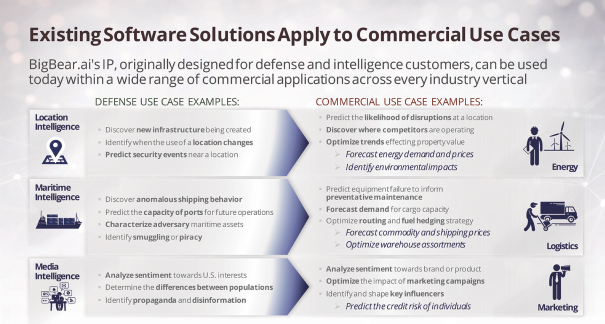February 8, 2021, a registration statement on Form
S-1MEF
(File
No. 333-252867)
pursuant to Rule 462(b) under the Securities Act, which was effective immediately upon filing, in order to increase the size of the IPO to $
312.0 million.
On February 8, 2021, the Company entered into an underwriting agreement to conduct the IPO of
31,200,000 Public Units in the amount of $
312.0 million in gross proceeds, with a
45-day
option provided to the Underwriters to purchase up to
4,680,000 additional Public Units solely to cover over-allotments, if any, in the amount of up to $
46.8 million in additional gross proceeds.
Each Public Unit consists of one share of the Company’s common stock, $0.0001 par value, and one-third
(1/3) of one Public Warrant. Each whole Public Warrant is exercisable for
one share of common stock at a price of $
11.50 per full share.
On February 11, 2021, the Company consummated the IPO of
35,880,000 Public Units, including the issuance of
4,680,000 Public Units as a result of the Underwriters’ exercise in full of their over-allotment option. The Public Units were sold at a price of $
10.00 per Public Unit, generating gross proceeds to the Company of $
358,800,000.
Each Public Unit consists of one share of common stock and one-third
(1/3) of a Public Warrant. Each whole Public Warrant is exercisable for
one share of common stock at a price of $
11.50 per full share. As a result, at least three Public Warrants must be exercised in order to obtain whole shares of common stock upon the exercise of the Public Warrants. Under the terms of the warrant agreement dated February 8, 2021 (the “Warrant Agreement”), the Company has agreed to use its best efforts to file a new registration statement under the Securities Act, following the completion of the Company’s Business Combination to register the shares of common stock underlying the Public Warrants.
Simultaneously with the closing of the IPO, the Company consummated the Private Placement of 1,099,600 Private Placement Units at a price of $10.00 per Private Placement Unit. The Company’s Sponsor purchased 850,000 Private Placement Units and the Underwriters purchased 249,600 Private Placement Units in the aggregate. The Private Placement generated aggregate gross proceeds of $10,996,000 consisting of $8,500,000 from the sale of the Private Placement Units to the Sponsor and $2,496,000 from the sale of the Private Placement Units to the Underwriters.
Following the closing of the IPO, net proceeds in the amount of $351,624,000 from the sale of the Public Units in the IPO and proceeds in the amount of $7,176,000 from the sale of Private Placement Units, for a total of $358,800,000, were placed in a Trust Account.
Transaction costs amounted to $20,399,474, consisting of $7,176,000 of underwriting fees, $12,558,000 of deferred underwriting fees and $665,474 of offering costs. The Company’s remaining cash after payment of the offering costs is held outside of the Trust Account for working capital purposes.
Amendment to Registration Rights Agreement
On March 31, 2021, the Company entered into an Amendment to Registration Rights Agreement with the Underwriters and the Insiders, in order to correct an inadvertent clerical error which resulted in an inconsistency between the agreement and the disclosure made in the prospectus for the IPO. The Company has corrected the error and conformed the Registration Rights Agreement signed on February 8, 2021, with the Company’s initial Registration Statement on Form
S-1
(File No
333-252315).
Amendment to Insider Letter Agreement
On March 31, 2021, the Company entered into an Amendment to Insider Letter Agreement with the Underwriters and the Sponsor, in order to correct an inadvertent clerical error which resulted in an inconsistency between the agreement and the disclosure made in the prospectus for the IPO. The Company has corrected the error and conformed the Insider Letter Agreement with the Underwriters and the Sponsor signed on February 8, 2021, with the Company’s initial Registration Statement on Form
S-1
(File No
333-252315).



